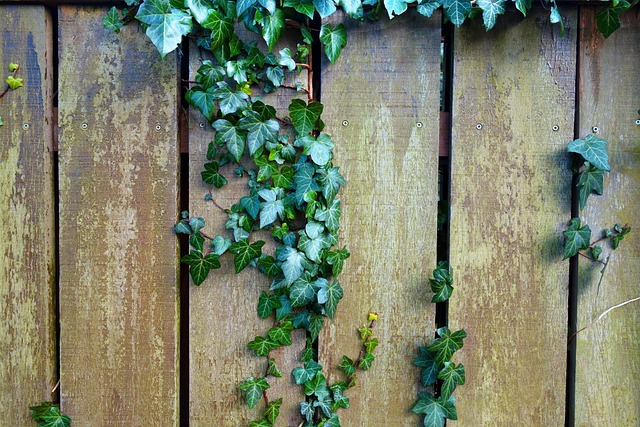DIY Fence Installation Tips for New Bedford, Massachusetts Homeowners
Considered a substantial addition to any property, fences offer security, privacy, and aesthetic appeal. For New Bedford homeowners looking to install a fence, understanding the local regulations, planning the layout, and selecting the right materials are crucial steps. This guide delves into the DIY process, covering everything from comprehending your fence options specific to New Bedford properties, through acquiring necessary permits, to a step-by-step installation guide and post-installation maintenance tips.
- Understanding Your Fence Options for New Bedford Properties
- Measuring and Planning Your Fence Layout
- Acquiring Necessary Permits: A Legal Guide for Homeowners
- Tools and Materials Required for Successful Installation
- Step-by-Step Guide to DIY Fence Construction
- Post-Installation Tips for Longevity and Maintenance
Understanding Your Fence Options for New Bedford Properties
When it comes to fencing your New Bedford, Massachusetts property, understanding your options is key. The first step is deciding on the material—wood, vinyl, or chain-link are common choices for their durability and aesthetic appeal. Wood offers a natural look but requires more maintenance; vinyl is low-maintenance and available in various styles; while chain-link provides maximum security and visibility.
Next, consider the type of fence best suited to your space. Privacy fences are ideal for blocking out neighbors and creating a peaceful outdoor retreat, while picket fences offer a traditional aesthetic and better visibility. For larger properties with open spaces, post-and-rail fences provide a strong barrier without restricting views. Always assess your yard’s unique features—trees, flower beds, or slopes—to ensure the fence you choose complements your landscape and fits seamlessly into your New Bedford property.
Measuring and Planning Your Fence Layout
When planning a DIY fence installation, one of the most crucial steps is measuring and arranging your fence layout. Start by assessing the perimeter of your property to determine the total length required for the fence. Mark out the boundary with stakes and string to get an accurate measurement. Consider the style and design you want—whether it’s a traditional wooden fence or a modern metal one—and sketch out a rough plan, noting any gates, posts, or specific measurements for different sections.
This planning phase is essential as it helps you visualize the final product and ensures your materials are ordered correctly. It also allows you to identify potential challenges, like trees or other obstacles, and plan how to navigate them. By taking the time to measure and plan, you set yourself up for a successful DIY fence project that will enhance your New Bedford, Massachusetts property.
Acquiring Necessary Permits: A Legal Guide for Homeowners
Before you start hammering away, it’s crucial to understand that New Bedford, Massachusetts may have specific regulations regarding fence installation. Always check with your local government or building department for any permits required. These rules are in place to ensure your project complies with community standards and safety measures. Failure to obtain necessary permits could result in fines or even the requirement to dismantle your fence.
The process typically involves submitting an application detailing your project specifics, including fence location, materials used, and intended purpose. Be prepared with relevant documents like property surveys, blueprints (if applicable), and proof of insurance. Keeping open lines of communication with local authorities can help ensure a smooth installation process, allowing you to focus on building the fence of your dreams while staying within legal boundaries.
Tools and Materials Required for Successful Installation
When it comes to DIY fence installation, having the right tools and materials is essential for a successful project. For New Bedford homeowners taking on this task, start by gathering basic tools like a post-hole digger or excavator, a hammer, a level, string, and stakes. These will help you mark out your fence line accurately and dig the holes for the fence posts.
For the materials, opt for high-quality wooden or vinyl fence posts, rails, and pickets. Don’t forget the necessary hardware like brackets, screws, and post caps to secure everything in place. Additionally, a good quality concrete mix is required to set the posts firmly in the ground. Ensure you have enough of each material based on the length and design of your fence.
Step-by-Step Guide to DIY Fence Construction
When it comes to DIY fence installation, a step-by-step approach ensures success. Start by assessing your yard and deciding on the fence’s design and material. Wood, vinyl, or metal—each offers unique benefits. Once you’ve made your choice, gather all necessary tools and materials, including posts, rails, fencing panels, concrete for setting posts, and fasteners. Clear a path along the desired fence line, removing any plants or obstacles. Dig holes for the posts, ensuring they are deep enough to provide stability. Place the posts in the holes, use wooden beams to reinforce the posts, and connect them using brackets or bolts. Attach the rails to the posts at the desired height, providing a solid foundation for the fencing panels. Securely fasten the panels to the rails, creating your new fence. Regular maintenance like painting, sealing, or cleaning will ensure its longevity.
Post-Installation Tips for Longevity and Maintenance
After successfully installing your new fence, there are several post-installation tips to ensure its longevity and maintain its quality. First, check all connections and tighten any loose screws or bolts. Regular inspection is key; look for signs of wear, rot, or damage, especially in areas exposed to extreme weather conditions.
Regular cleaning and sealing can also help protect your fence. Use a pressure washer to remove any built-up dirt, then apply a water-repellent sealer designed for wood or vinyl fences. This simple step can prevent moisture absorption, which can lead to rot and damage over time.
